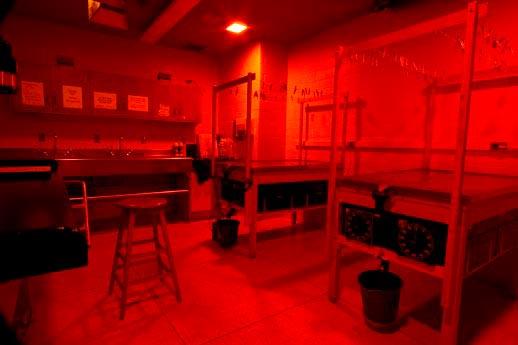By Sarah Del Giallo
News Editor
Photography students were barred from their darkroom last week for “health and safety” issues over dangerous chemical processes being used in the badly-ventilated area.
Concerns surfaced at the end of last semester when a number of grad students complained of headaches, dizziness and nausea after working with historical processes that include the chemical ether.
“We closed [the dark room] because we suspected there might be a problem. We were concerned mostly about the ventilation,” said Robert Burley, the photography program director.
“We’re in an interim facility, and it’s not an ideal space,” he said. “It was really the only place on campus that was open.”
The department requested an air quality test at the end of last semester. The findings of this test have yet to come back.
Julia Lewis, director of Ryerson’s centre of environmental health, safety and security management (CEHSSM) said, “To do an air quality test, you need to identify very specifically what it is you are looking for. The darkroom’s test is specifically looking for Volatile Organic Carbons.”
“Ether is an example of an organic carbon that at certain temperatures could evaporate and become respirable,” she said.
Ether is a colourless liquid that can evaporate making it easy to inhale.
Grad students in the photographic preservation and collections management program use ether in a process called wet collodion.
Collodion is a syrupy substance, and the process involves pouring collodion onto a glass plate which is then dipped into liquid nitrate.
Among less serious reports of illness, one student called to report that she had vomited after using the collodion process, but Burley wouldn’t confirm whether ether was the cause.
“It might have been attributed to the chemistry she was working with, but we don’t know for sure,” he said.
The darkroom reopened on Monday and Burley said stricter care will be taken to be sure students are following MSDS safety standards.
MSDS is a material safety data sheet. It contains information about how to properly handle and work with particular substances.
While Burley said the reopened darkroom will follow MSDS standards “religiously”, the Eyeopener couldn’t locate any MSDS in the darkroom on Monday night and the person working the cage also couldn’t find them.
Health and safety issues aren’t the only concern for photography students this semester, and the darkroom isn’t the only room they’ve been locked out of.
Students have faced a number of frustrating concerns with their facilities including a closed darkroom, a closed scanning and printing rooms, and a smaller studio facility.
The darkroom didn’t reopen at the start of semester, students were not informed until Thursday of last week of the potential chemical hazard.
Cage workers even showed up for their shifts on the first day of class to find themselves locked out of their workplace.
Christopher Lacroix, a third-year photography student and the photography representative for the image arts course union has created a petition against the photography program for better communication from administration to students and better access to facilities.
“Over the past few years, out facilities have been reduced more and more,” he said.
“The petition is asking for a review of access to certain rooms like the printing and scanning rooms.”
The printing and scanning rooms have already been a point of contention this semester. The scanning room was closed for the first week of classes and the printing room is still closed for unspecified reasons. When the printing room is open, it only operates on weekdays from 11 a.m. until 4 p.m.
“The hours of the facilities don’t necessarily fit the needs of the students, and that’s something we need to fix,” said Lacroix.
“It’s preventing people that want to get ahead,” he said.
“It’s the people who have the best GPAs and the people who are the most dedicated to their work who are getting the most frustrated.”
Aaron Friend Lettner is a second-year photography student who works in the darkroom’s cage. He’s helping Lacroix with the petition.
Friend Lettner said his frustration comes from paying full tuition for facilities that were promised and don’t yet exist.
While those creating the petition expect the issue to be resolved easily, they will be requesting a tuition-rebate if no compromise can be made.
“We’re paying full tuition, but getting a third of what was promised to us,” said Friend Lettner.
“The expectation is to produce professional work, and it’s hard to do that when you’re not given professional facilities.”
Lacroix agreed. “We feel like the limited facilities are limiting our creativity.”
Lewis expects the air quality test results in approximately two weeks.
Photo: Chelsea Pottage










Gram
Can’t you get high off ether? A la Fear and Loathing…